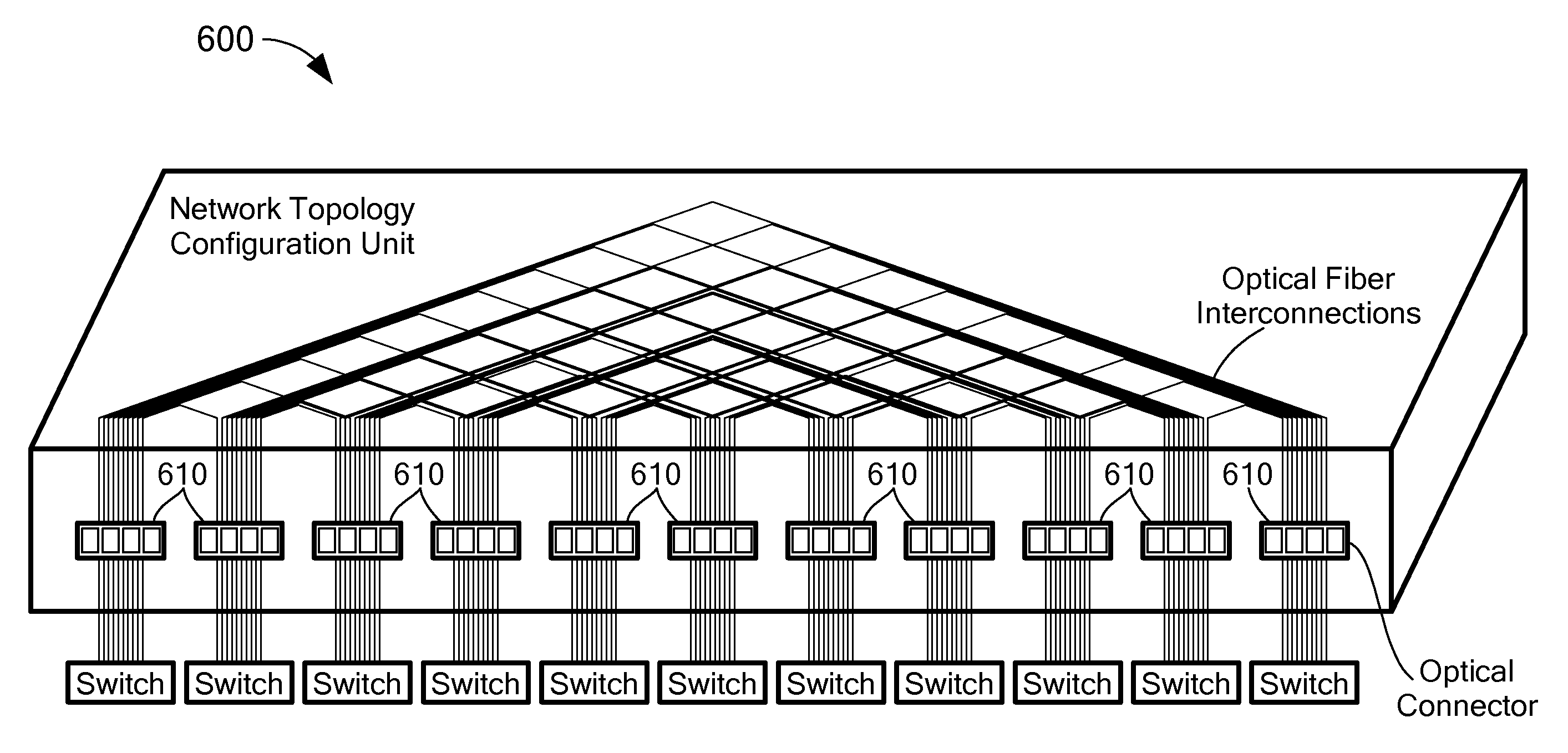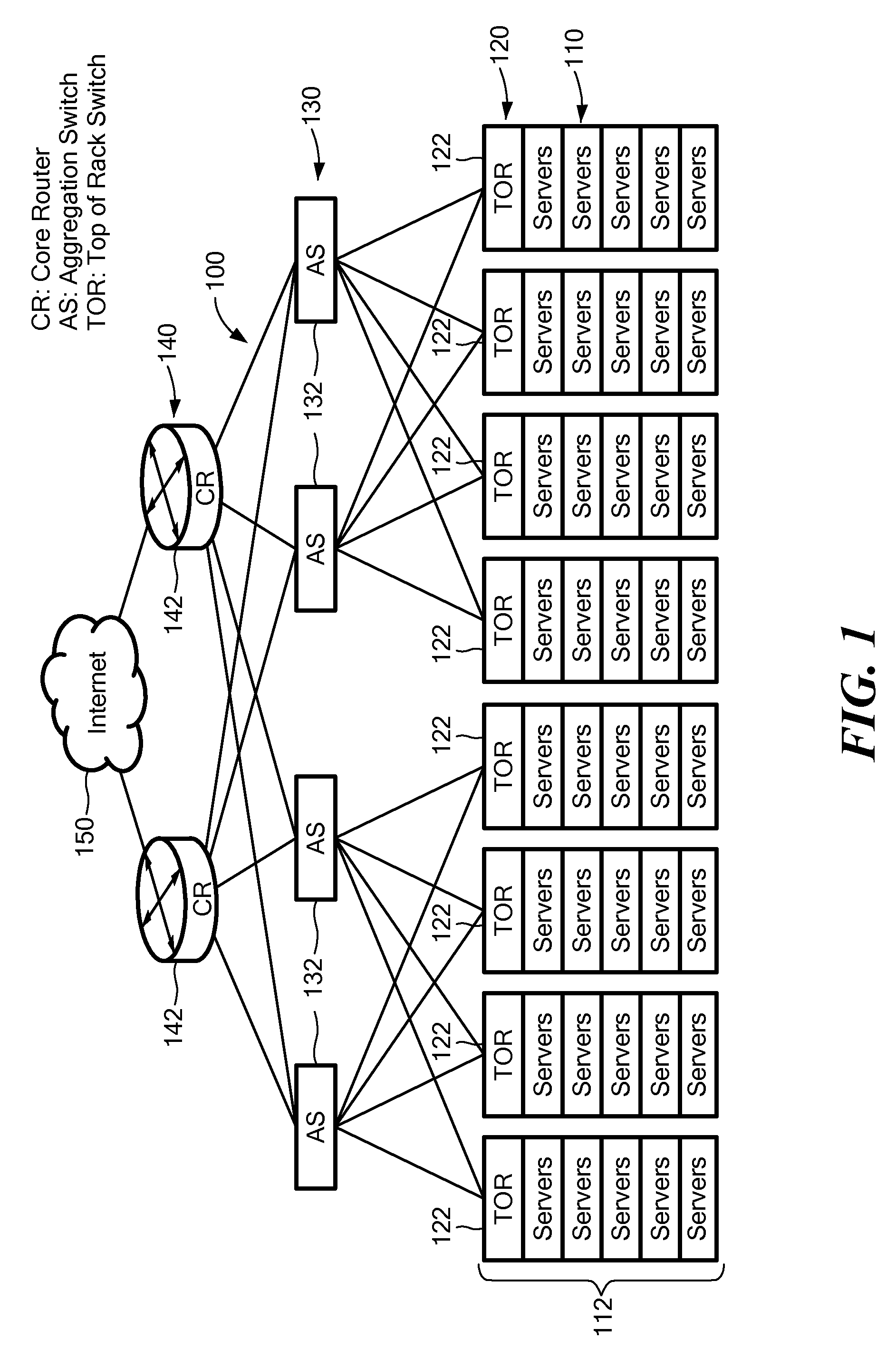System and method for data center optical connection
a data center and optical connection technology, applied in the field of data center optical connection system and method, can solve the problems of dictating at least a portion of implementation cost and limited to a 100 meter reach, and achieve the effect of simplifying cabling, simplifying connections, and reducing cost components
- Summary
- Abstract
- Description
- Claims
- Application Information
AI Technical Summary
Benefits of technology
Problems solved by technology
Method used
Image
Examples
example 1
[0051]In accordance with an exemplary embodiment, NTCU 600 is used to replace 24 CWDM cables for a switch 1, and 48 CWDM cables for a switch 2, with 6 Silicon Photonic QSFP+ for switch 1 and 12 QSFP+ for switch 2. This eliminates a CWDM MUX / DMUX module, providing significant costs savings. Two 24 SM fiber MTP connectors are used to connect each of switch 1 and switch 2 to NTCU 600, and can be suitably labeled, such as “West / East.” The optical cost reduction can be on the order of from one quarter to one third of the implementation cost without NTCU 600.
[0052]The above example shows the cost benefits of using NTCU 600 on the basis of reducing cable runs used to implement the network connections. In addition, the network connections can scale with 3-D, 4-D mesh for very large data center, as the 4 km reach of the lower cost fiber can cover even the largest data center. Accordingly, as a data center scales-out, more expensive fiber options need not be deployed when NTCU 600 is used to ...
example 2
[0053]In accordance with the present example, two optical MTP cables are used for each switch to implement a CWDM ring solution in conjunction with the fiber shuffle device of the present disclosure. This number of optical MTP cables is twice that of a conventional ring implementation, where each switch is directly connected to a neighboring switch. However, the use of two MTP cables per switch is still manageable with regard to cost, and permits straightforward scale-out and simplified management of cabling and connectivity. For example, if it were desired to change the CWDM ring to another topology, such as a chordal ring, the connections for the new topology can be made with relative simplicity and ease at the fiber shuffle device of the present disclosure. Thus, the cables and connections can be changed at a single location, to produce a new network topology, without having to add cables, or change cable connections at the switches themselves.
[0054]While the above discussion ill...
PUM
 Login to View More
Login to View More Abstract
Description
Claims
Application Information
 Login to View More
Login to View More - R&D
- Intellectual Property
- Life Sciences
- Materials
- Tech Scout
- Unparalleled Data Quality
- Higher Quality Content
- 60% Fewer Hallucinations
Browse by: Latest US Patents, China's latest patents, Technical Efficacy Thesaurus, Application Domain, Technology Topic, Popular Technical Reports.
© 2025 PatSnap. All rights reserved.Legal|Privacy policy|Modern Slavery Act Transparency Statement|Sitemap|About US| Contact US: help@patsnap.com



